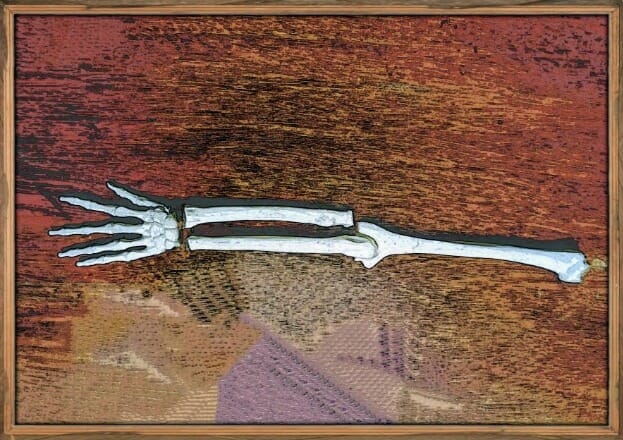
Why your arm doesn’t fall off

Professional Pathways in Somatic Movement: Building Knowledge, Skills & Practices is the latest online conference created by ISMETA, the International Somatic Movement Education and Therapy Association. Starting a week from today, exemplary proponents of a wide range of contemporary embodied practices will be presenting 70-minute sessions introducing their work and some aspects of how they train others.
Ever since I first attended an ISMETA event decades ago at a Bay Area college, I have resonated with their mission. Participating in this kind of gathering has shown me how much I share with others whose methodologies begin with the body, with sensation, action, and intention. I’ve also learned that in conversation with folks, like fellow presenter Aline Newton, a Rolfer from Boston, who I met thanks to a shared friend and colleague. As the director of an ISMETA certified professional training program, I have connected and interacted with trainers from the world over. However it happens, I deeply appreciate coming together with fellow somanauts — explorers of the somatic domain — and learning from them.
The conference offers the chance to experience varied somatic approaches for a test drive. You also get to be part of worthwhile roundtable discussions and other events. The big challenge is deciding which sessions to attend.
If you’re interested in how we prepare future Feldenkrais teachers and want to learn some of the basic building blocks of Moshe’s method, please check what I am offering:
Why your arm doesn’t fall off, why that matters, and what it means.
- Learning objective: Participants will learn about absolute and relative constraints, apply these concepts to the function of the arm, and understand what they reveal about optimal action.
- Description: The Feldenkrais Method is based on a deep understanding of how we can learn to move in an easy, efficient, and enjoyable manner. In this workshop, you will explore how your arm and shoulder girdle connect to the rest of your body. Along the way, you will uncover common misconceptions as you discover, from the inside out, your body’s biomechanical design for dexterity, flexibility, and strength.
You will learn about absolute and relative constraints, find out what they reveal about how we are made for moving, and investigate the part they can play in helping others learn. We will put these abstract ideas into practical action in three ways:
1) Observing and decoding the way we move.
2) Understanding what interferes with moving well.
3) Improving skills and abilities.
Your thoughts?
Please let us know your perspective! Add your comments, reactions, suggestions, ideas, etc., by first logging in to your Mind in Motion account and then clicking here.
Commenting is only available to the Mind in Motion Online community.
Join in by getting your free account, which gives you access to the e-book edition of Articulating Changes (Larry's now-classic Master's thesis), ATM® lessons, and more — all at no charge whatsoever.
To find out more and sign up, please click here.
Please share this blog post
 This work is licensed under a Creative Commons Attribution-ShareAlike 4.0 International License
This work is licensed under a Creative Commons Attribution-ShareAlike 4.0 International License
This blog may contain one or more affiliate links. When you click on a link and then make a purchase, Mind in Motion receives a payment. Please note that we only link to products we believe in and services that we support. You can learn more about how affiliate links work and why we use them here


Responses